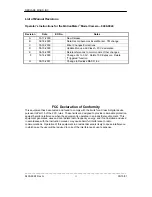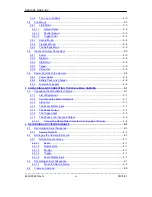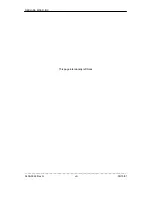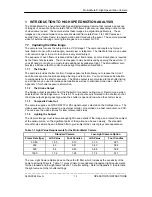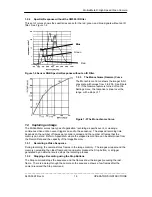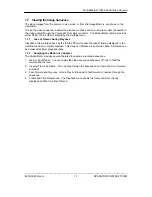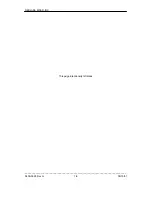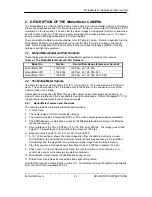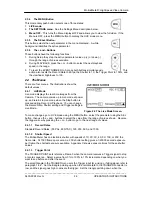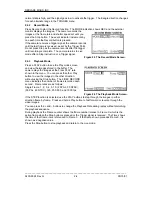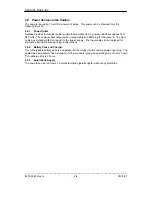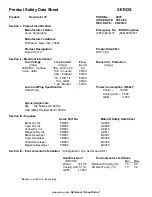
Motion
Meter
High Speed Video Camera
_____________________________________________________________________________
9400-0024 Rev. G
1-1
OPERATOR'S INSTRUCTIONS
1 INTRODUCTION TO HIGH SPEED MOTION ANALYSIS
The
Motion
Meter
is a hand-held High Speed Digital Imaging Camera that records a sequence
of images of an event at a frame rate of 60 to 1000 frames per second, depending on the model
of video camera used. The camera stores these images in a digital Image Memory. These
images can be viewed forward or reverse at selected frame rates from 1 to 1000 frames per
second (fps), or freeze frame, to analyze motion and time during the event. The camera provides
video for external viewing or storing the images on a computer or VCR.
1.1 Capturing the Video Image
The camera lens focuses the subject onto a CCD imager. The camera accepts any C-mount
lens, fixed or zoom, with a wide angle, normal view or telephoto. The telephoto lens may be used
in its normal range or in macro to capture a very small subject.
The exposure of each frame is reduced at the higher frame rates, so more illumination is required
as the frame rate increases. The correct exposure may be achieved by opening the aperture. If
you still need more light, you must provide additional incandescent light. The
Motion
Meter also
provides a Strobe output to control a strobe light for additional illumination.
1.1.1
The Shutter
The camera provides shutter control of image exposures that allows you to reduce the time of
each frame exposure to eliminate image blurring due to motion. You must increase illumination
to compensate for the shorter exposure. The Strobe output is synchronized to the shutter timing
so a strobe may be used to increase illumination as well as to eliminate motion blur. Refer to
Appendix C for shutter exposure information.
1.1.2
The Strobe Output
The Strobe output is available from the Digital Out connector during Live or Record mode, when
selected from the Settings menu. This is a TTL output pulse synchronized to the shutter, so that
the strobe output signal goes high when the shutter is open and low when the shutter closes.
1.1.3
Composite Video Out
The camera supplies an NTSC RS170 or PAL signal output, selected on the Settings menu. The
video sequence can be viewed on an external monitor, or recorded on a host computer or a VCR.
You can save the video pictures for later retrieval and study.
1.1.4
Lighting the Subject
The Camera Imager must receive enough light to see details of the image, and record the subject
at the optimum size, so the significant parts of the motion can be seen clearly. The standard
monochrome camera has an infrared filter to give subjects the correct gray scale appearance.
Table 1-1 Light Value Requirements for the
Motion
Meter Camera.
Standard Camera
Low-Light Camera Option
Frame Rate (fps)
LUX Value
Foot Candles
LUX Value
Foot Candles
50, 60
1.03
0.10
0.10
0.01
250
4.3
0.41
0.43
0.04
500
8.6
0.83
0.86
0.08
1000
17.2
1.65
1.72
0.17
The Low Light Camera Option does not have the IR filter, which increases the sensitivity of the
camera at low light levels. Table 1-1 gives minimum incandescent (tungsten) light requirements
for the standard and low light cameras at a 1X shutter setting. Refer to Appendix C to determine
the light values at other shutter settings.


